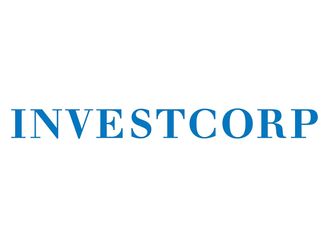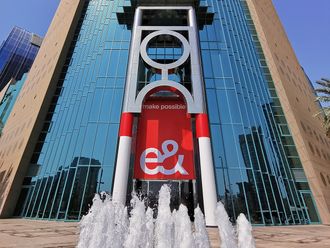NEW YORK
Shake-ups come infrequently for the Dow Jones Industrial Average, but some degree of change may be in the works for the stock index as two of its 30 constituents prepare to transform from large conglomerates into smaller companies.
The latest occasion to re-examine the Dow stems from chemical company DowDuPont Inc, which is breaking up into three publicly listed stocks. The first step, the separation of the company’s Dow materials science division, is due to take effect on April 1.
Another index component, industrial conglomerate United Technologies Corp, is also in the process of separating into three companies, possibly in about a year.
While many professional investors prefer other stock gauges to the Dow, membership in the blue-chip index — often thought of as Main Street’s market barometer — still carries allure because of its relatively few constituents. Funds with billions of dollars under management are also linked to the index, so constituent changes affect flows into and out of stocks.
While pieces of the original components could stay in the Dow, those corporate actions could spur the overseers of the index to add fresh blood, some market watchers say.
“All of the options are certainty on the table,” said Todd Rosenbluth, head of ETF and mutual fund research at CFRA. “This could be a catalyst for a new addition to the broader index.” S&P Dow Jones Indices, which publishes the Dow index, will make an announcement before April 1, according to spokesman Ray McConville.
Any time there is a corporate action in an index, McConville said, “S&P DJI will review the index and make any necessary changes and issue a public announcement before the transaction takes place.” Known for its inclusion of large US companies as well as its relatively few members compared to other barometers, the Dow has changed components roughly every two years over the past 20 years. The most recent such move came last June, when longtime member General Electric Co was replaced by Walgreens Boots Alliance Inc.
Prior to that, DowDupont took over for DuPont in September 2017, after the latter company merged with Dow Chemical, and Apple replaced AT&T in March 2015.
The index is a measure of 30 companies designed to provide suitable sector representation, except for transportation and utilities stocks, which are covered by other Dow Jones indexes, according to published methodology for the index.
The overall level of the Dow does not change when its components do, because the divisor used to calculate the index is adjusted.
Stock selection is “not governed by” quantitative rules, according to the published methodology, which also says “a stock typically is added only if the company has an excellent reputation, demonstrates sustained growth and is of interest to a large number of investors.” The subjectivity of the criteria regularly prompts speculation about which companies may qualify.
Some companies that seem like obvious candidates at first blush may have strikes against them. For example, two of the largest US companies — Amazon.com Inc and Alphabet Inc, the parent of Google — have share prices that are both well over $1,000 each.
That’s a problem because such high prices would warp the Dow, whose constituents carry more weight the higher their share price. At about $375 a share, Boeing Co is the highest priced stock in the Dow by more than $100.
Many indexes, such as the S&P 500, are weighted by companies’ market capitalisation, rather than by their share price.
One remaining piece of DowDuPont — the only materials sector stock in the Dow — could stay in the Dow Jones index.
“If you take DowDuPont off, then there is nothing really with that materials” exposure, said James Ragan, director of wealth management research at D.A. Davidson in Seattle. “I am not sure this is an opportunity to make a big change here.” The DowDuPont break-up will leave Dow, speciality products company DuPont and Corteva, which focuses on agriculture.
Dow and DuPont would be the biggest of the three, with market values estimated at about $50 billion and $60 billion, respectively, according to Nomura Instinet analyst Aleksey Yefremov. “If they want to have a materials company they have to pick one of these two, just because they are so broad” Yefremov said.
United Tech is separating into an aerospace supplier, an elevator manufacturer, and a provider of building products including air-conditioning systems.
Aerospace is by far the biggest division of the three by sales, but with one aerospace stock already in the Dow — plane maker Boeing — that new company may be redundant.
In many investors’ eyes, the Dow pales in importance as a market barometer to the S&P 500, with its 500 constituents weighted by market value. Just over $23 billion is invested in mutual and exchange-traded funds tied to the Dow Jones Industrial Average compared to nearly $4.3 trillion tied to the S&P 500, according to Lipper research.
But the more than 120-year-old index remains a popular market gauge.
“The Dow’s price-weighted construct and the fact that it’s only 30 names makes it reasonably distinct from measures that folks will more likely look at to be representing the market as a whole,” said Simeon Hyman, global investment strategist at ProShares, which has five ETFs with $1.5 billion linked to the Dow.
But, adds Hyman: “The fact that it’s distinct means that some folks will find utility in it.”












